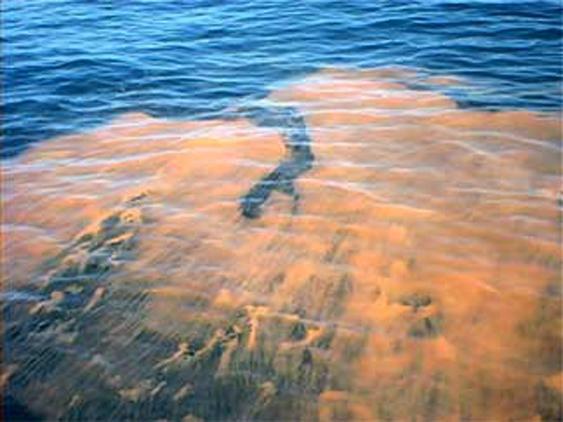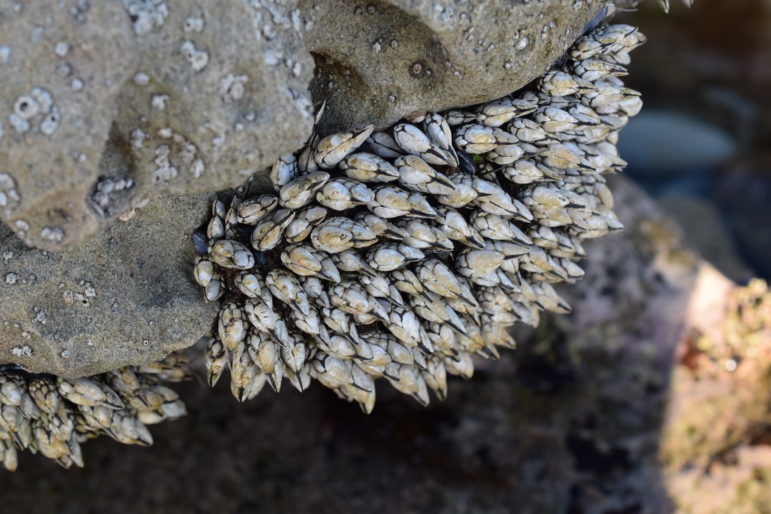TWH – Several stories in the last month point out serious problems impacting the waters on both coasts and in the Gulf of Mexico. On its Gulf Coast, Florida experienced an-out-of-season toxic red tide and hazardous algae bloom on its Atlantic Coast. The blooms on Florida’s Atlantic Coast have led to a sharp increase in the number of manatee deaths.
The record-setting heatwave in the U.S. Pacific Northwest killed millions of shellfish. In Minnesota, pet owners bored with their pet goldfish, are releasing them into lakes. In those lakes, goldfish are acting like the invasive species that they are. They grow to 1.5 ft (46 cm) in length.
Red tides
According to an NPR article, “At least 600 tons of dead fish have washed up along Tampa Bay’s shore” in July as a result of a “red tide.” Pinellas County solid waste division reported cleaning up roughly 600 tons of dead sea life from the beaches since June. Red tides, a bloom of toxic algae, regularly occur off of Florida’s Gulf Coast.

Red tide – Image credit: NOAA – Public Domain
Those algae, Karenia brevis, are a natural part of the ecosystem of the Gulf of Mexico, but red tides at this time of year are not. Generally, algae blooms start in the fall and last through January. In 1995, 2005, and 2018, toxic blooms also occurred in the summer.
Humans generally experience red tides as the cause of respiratory irritation. Marine life finds red tides to be lethal.
Hazardous algae blooms and manatee deaths
The Florida Fish and Wildlife Conservation Commission issued a preliminary report on known manatee deaths from Jan. 1 through July 23, 2021. According to that report, 881 manatees have died in Florida waters so far in 2021.
This is a significant jump in deaths. For the entire of 2020, only 637 known manatee deaths occurred. Over a five-year period, known manatee deaths have averaged 578 per year.

Blue Spring State Park Florida – Image credit: Mwanner at English Wikipedia, CC BY-SA 3.0
The NPR article Florida Breaks Annual Manatee Death Record In First 6 Months Of 2021 has reported that this death toll marked the highest number of known manatee deaths since 2013. In that year, a red tide caused most of the deaths.
In 2021, most of the deaths occurred in the Indian River Lagoon Area. The red tide and its toxins so far in 2021 have not had a significant impact on manatee deaths.
The Florida Fish & Wildlife Conservation Commission blamed the deaths on the loss of manatee-friendly habitat in the Lagoon. Two factors define a manatee-friendly habitat: 1) the warmth of the water, and 2) the presence of their food source.
The Save the Manatee Club advocates on behalf of manatees. Ally Greco serves as its Director of Communications and Outreach. She said that manatees can only live in waters warmer than 20o C (68o F). During the winter, they flock to waters warmed by power plant run-offs.
A manatee habitat has to have seagrasses, the manatee’s primary food source. Those sea creatures need to eat 10% of their body weight per day. Manatees can weigh as much as 453.6 kg (1,000 lbs.).
According to Greco, harmful algae blooms grow out of control and produce “toxins or cause other harmful effects on their environment.”
Rivers not only carry warm waters from power plants. They also carry runoff from all along its shores. Greco said that the hazardous toxic blooms on Florida’s Atlantic coast resulted from excess nutrients from “agriculture, residential use, fertilizers, and other sources.”
Hazardous toxic blooms feed on these nutrients and grow in thick layers. Greco also highlighted the impact of how algae forms, “[in] thick layers of algae on the surface of the water (or along the water column) and block sunlight from reaching seagrasses and other aquatic vegetation.”
The St. Johns River Management District reported that 58% of seagrasses in the lagoon had disappeared. The District ascribed this disappearance to nitrogen and phosphorous runoffs from “overfertilized lawns, faulty sewage treatment and leaching from septic tanks.”
Too many manatees tried to graze on the damaged seagrass “crops” of the Indian River Lagoon. Given the colder waters surrounding the lagoon, these manatees were trapped. As the waters warmed, the manatees began to leave the Indian River Lagoon. They began to forage elsewhere along the Atlantic coast.
Differences between hazardous algae blooms and red tides
Greco compared the red tide on Florida’s Gulf Coast with the hazardous algae blooms on Florida’s Atlantic Coast. Hazardous algae blooms on the Atlantic coast reduce sunlight and disrupt photosynthesis. In contrast, the red tide of the Gulf Coast releases toxins into the air.
Greco said, “Manatees can inhale toxins from the red tide when they surface to breathe air or ingest toxins when they feed on vegetation. This can result in seizures or drowning.”
Greco had specific advice for people living in or visiting Florida. She urged people to reduce, if not end, fertilizer and herbicide use.
She also urged people not to feed manatees. Humans feeding manatees leads to manatees associating “people, boats, or certain areas with handouts, which alters their behavior and can encourage them to hang around an area that does not have enough food for them naturally.”
To find out more about toxic blooms, please visit Save the Manatee Club.
The Wild Hunt has previously reported on the marked increase in manatee deaths in April of this year.
Shellfish “cooked” by record-high temperatures
In the early summer of 2021, the U.S. Pacific Northwest experienced record-breaking temperatures. According to an article in the Anchorage Daily News, the water temperatures rose enough to “cook” a large number of marine creatures.
The dead sea creatures include mussels, clams, and snails. Shoreline rocks reached a temperature of 122o F (50o C). For mussels and other stationary shellfish, the heat was too much.

Mussels – Image credit: incidencematrix – CC BY 2.0
Marine biologist, Chris Harley, estimated that the death toll in the Salish Sea had reached 1 billion dead small sea creatures. The Salish Sea refers to the inland waters of British Columbia and Washington State. It includes Puget Sound. Nearby cities include Bellingham, Seattle, Tacoma, and Vancouver.
Shellfish companies also reported record numbers of shellfish deaths.
The invasion of the giant goldfish
The Minnesota city of Burnsville made the national news after they reported collecting “football-sized” goldfish from Keller lake.
Please don’t release your pet goldfish into ponds and lakes! They grow bigger than you think and contribute to poor water quality by mucking up the bottom sediments and uprooting plants.
Groups of these large goldfish were recently found in Keller Lake. pic.twitter.com/Zmya2Ql1E2— City of Burnsville (@BurnsvilleMN) July 9, 2021
Unwanted pet goldfish are frequently released into waterways because people think it is a more humane solution for disposal. The reality is that goldfish (Carassius auratus) are an invasive species.
In an aquarium, goldfish usually only grow to a few inches (5-6 cm) in length. In the wild, goldfish can grow to 1.5 ft (0.46 meters). They can also live as long as 25 years, easily survive cold winters and even go up to five months without oxygen.
As an invasive species, they consume food and space in the natural habitats of native fish and can have a very negative impact on those native populations. They also disturb lake bed floors by uprooting plants, and stirring up sediment since they are bottom feeders, which creates poor water quality.
In Carver County Minnesota, officials removed 50,000 goldfish from lakes in November 2020. Spokane, Washington, and Alberta, Canada have reported similar problems.
The Wild Hunt is not responsible for links to external content.
To join a conversation on this post:
Visit our The Wild Hunt subreddit! Point your favorite browser to https://www.reddit.com/r/The_Wild_Hunt_News/, then click “JOIN”. Make sure to click the bell, too, to be notified of new articles posted to our subreddit.
